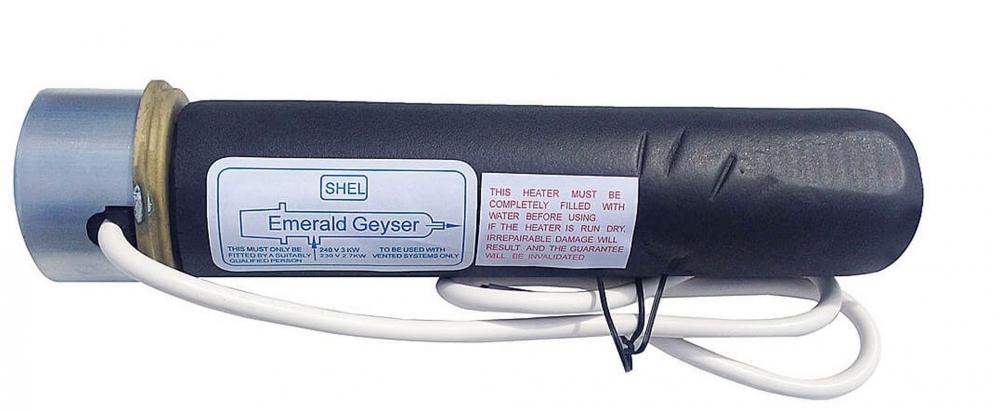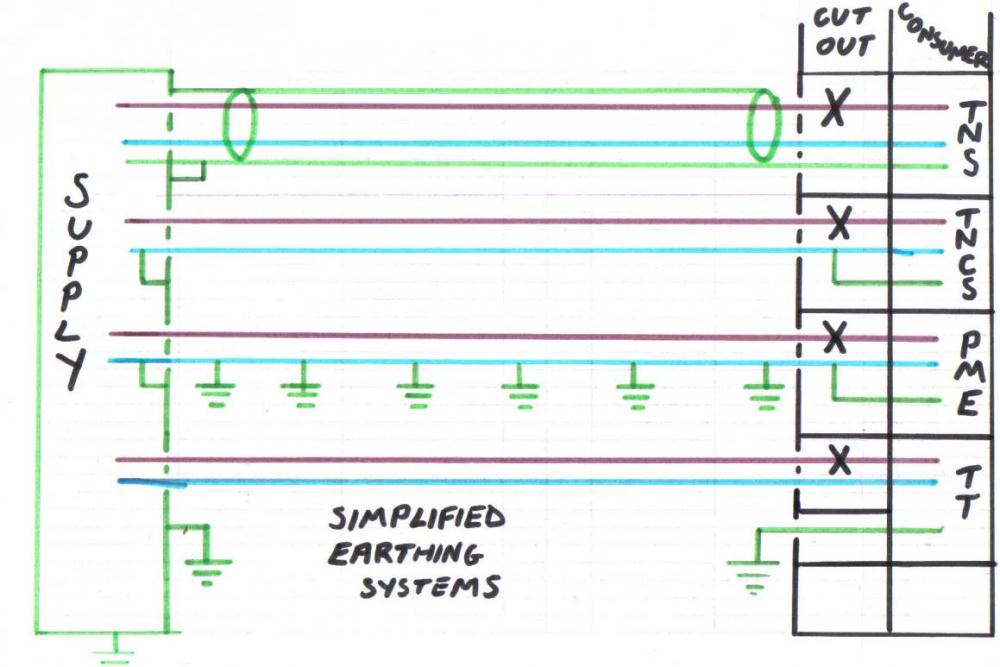Leaderboard
Popular Content
Showing content with the highest reputation on 02/05/20 in all areas
-
The new motor is in and guest what? We have underfloor heating again. Yay. Thanks for the help and suggestions everyone.3 points
-
Finally got this fitted, stating the obvious.. it only bleedin' works! Dotted line is the max of the previous week (prior to fitting the fan) with the solid line being yesterday. Whilst the PPM still rises to just over 1000ppm, it remains relatively stable and then the decay is much quicker with the air clearing in an hour or so after finishing for the day whereas previously it took all night for the "air to clear". This is running it only on its 'fast trickle' setting of 9l/s 24x7. Next step is to try selectively switching on boost to see if I can keep the PPM down further. Temperature wise, there is a slight cooling affect but nothing drastic considering it's pulling in 3degC air this morning so the heat exchange appears to be working well. So in conclusion, if you seal it up tight, don't forget to ventilate right!!3 points
-
Just catching up with this thread, it's quite up my street as a similar sort of project. My own build was aimed at a similar market, although it's a somewhat smaller build (50m2/43m2 gross/net). It came in very close to my £40k budget, thanks to already owning the land, and doing 99% of the work myself. Rough costings, based on the categories in a previous post, are: £0 – Land £10,000.00 - Legals, electric connection, foul drainage design and installation, site scraping* £3,000.00 – Brick Piers, Landscaping & Driveway £22,000.00 – House Design, Supply & Build £1,000.00 – Water connection £1,200.00 – Internal Electrics £500.00 – Plumbing + Radiators £200.00 – Bedroom Furniture £800.00 – Bathroom £1,000.00 – Log Burner £300.00 – Curtains + Decorations £2,000.00 – Kitchen + Appliances** £0 – TV + Entertainment £150.00 – Dining Table + Sofa £250.00 – Cupboards and coffee tables etc £300.00 – Bedding & Towels & Accessories £200.00 – Decking Construction ============= £42,900 * I didn't have the option of a foul drain connection, and ended up spending £7k on a sewerage system. A big but unavoidable chunk of my small budget. ** Full size kitchen but I chose secondhand high quality appliances rather than cheap new ones. I feel justified in this decision, as we installed some cheap own-brand appliances in my own house and have had a lot of trouble with them. The 2nd hand Bosch stuff in the cottage has been faultless, and was so cheap it was almost free. Our furniture came in at about £700, because we were fortunately given a bed and sofa, and the rest of the furniture came, surprisingly, from the B&M discount store. It claims to be solid oak, and the only thing I would say against it that it is all quite small. But it's perfect for a holiday cottage where most people are only staying for three nights.3 points
-
Depending on what you are wanting to do, there is provision under an order made by a Scottish Minister by virtue of Schedule 1, Part 3 - holding of 5 acres of more, subsection 2 of the Caravan Sites and Control of Development Act 1960, that reduced the area of land required (from 5 down to 1) and crucially increased the amount of time caravans could be on land, (IIRC 5 or 6 months instead of 28 days) specifically for crofting land, the idea being to allow crofters an additional income stream. Unfortunately, the order isn't held online so you're reliant on the local planning office (or more likely the Planning Control Officer) having a dog eared copy to reference. I don't have a copy to hand but may be able to locate one next week.2 points
-
2 points
-
Hi, I'm new to the forum, so I thought it would be a good time to introduce myself. I'm working on a renovation project with my wife which is great fun and frustrating at the same time :). A little background on the project. The house started out as a bungalow built on a hill with great views. In the early 80's it was renovated and extended. The front of the property has the earth dug away to make space for a separate building (The same width as the bungalow upstairs) with a sundeck built on top of it overlooking an amazing rolling country side. At the time to gain planning they put this down as a garden storage room (They must have had a lot of garden equipment!) and therefore didn't join the 2 buildings together. In terms of finish, think of white Spanish villa with concrete balustrades. Stage 1: Last 4 years... Make it habitable as we have a young family (you know things like toilets / taps working and hot water / heating) The garden was overgrown and hadn't been maintained for about 10 years. Roll out the petrol powered tools! Decide what to do with the renovation while living here. Step 2: Start initial renovation So that's things like new roof as we had snow in the loft last year A glass box built above where the joining staircase will go down eventually including groundworks ready to house the stairs. Windows / doors across the front as the old wooden ones were about to fall out So now we're at the next stage, which is get the stairs in, stud walling up, first fix electrical, make a final decision on heating (air source / underfloor), VIP insultation as we're restricted on room height and all that lovely finishing stuff (flooring and Tech :)) After that's done we can move downstairs and start sorting out the top. I look forward to being involved in forum and meeting you all. No doubt I'll have a few posts about some of the items / decisions along the way as I'm sure you all have valuable advice :). Regards, Rod1 point
-
And if the design of that cabin puts internal walls within that span, that are helping tp support the roof then that puts extra load on the floor joists to take account of.1 point
-
I doubt it that directly qualifies as a "caravan" I doubt it is built to be lifted in one piece without falling apart. However I am fairly certain you could make it so by placing it onto a base that was designed with lifting points to allow the whole thing to be lifted in one go by a crane.1 point
-
Hopefully your croft is well sheltered. I would be concerned how well it would stand up in the Highlands.1 point
-
1 point
-
@morkus As far as I understand it is necessary to get PP but you can avoid building regulations for 'portable buildings'. have a look at the Caravans Act, under the latest update it is possible in England, Wales (N.I.?) to build a mobile home of up to 136 sq metres with only planning permission for a 'Caravan'. In Scotland it is about 107 sq metres Here is a Scottish link but the others are very similar https://www.highland.gov.uk/downloads/file/1346/bst_018_caravans_and_mobile_homes and here is a more commercial link http://www.newforestlogcabins.co.uk/page45.html just to emphasise, mobile home definition is basically a building which can be split into two parts which (in theory) can then be put on the back of two lorries, it does not even have to be possible for the lorries to get to the specific site or to have originally delivered the building.1 point
-
Thanks, some interesting points to take on board. Regarding the planning permission, it was only full authorised early January 2020, so all good on that front. Regarding the land gift/sale, i'm hoping the accountants will shed some better light on this situation as there's numerous opinions online.1 point
-
Shouldn't need any sort of driver, as it has a standard UART serial interface, running at 9600 baud. Might need level shifting, though, as it's a 5V device. Here are the data sheets I have for it: 6890478_T6004_Application%20Note.pdf UART_SPI_6004_X04_Protocol_02.pdf Looking at my code, it just spits out the following 8 bytes at 9600 baud to the Telaire module to ask it to send data: $FF $FF $FE $02 $02 $03 $76 $05 and then receives back 6 bytes of data (also at 9600 baud) from the module. I've just ignored the first 4 bytes and concatenated the last two bytes into a 16 bit word that is the CO2 ppm value. I went on and converted this to five ASCII bytes, as both the data storage and display uses ASCII. I'll have a dig around and see if I can find one.1 point
-
Are you using MicroPython on them. @TerryE knows a lot about them but he uses a different language, and I don't really want to learn too much as I struggle with programming. As soon as I see a {} I get nervous.1 point
-
If you are trying to make your new build energy efficient why not do the whole job and fit MVHR?1 point
-
It looks fine. It is more usual to have measurements in millimetres. When you build this make sure you cut to open the cavity between bedroom 2 and the enlarged bathroom or you will have cold bridge and damp issues.1 point
-
If you get rid of the mixing /blending valve and manifold pump you could revert to just having one pump. According to what others have said the Willis heaters should regulate the temperature, doing away with need to blend? PS - Ive just ordered bare manifolds and will connect these up directly to the Willis heater and use a standard recirculating pump set up. Ill set a low temperature on the Willis and see how it works.1 point
-
Hmmmmmmmm not sure this will be worth all the bother really. I ran the calibration cycle with all windows open yesterday morning, and overnight the numbers were even more whacky post-calibration, over 3600ppm. Again I'll let this run for a few more days and see if it settles. Also it might well be a duff unit / QC reject I suppose. Eitherway I think I've had a fun mini-project proving @Ed Davies's point.1 point
-
AIUI, these are the same sensor: the Netatmo; there isn't a VentAxia sensor. Max values for the previous week (dotted line) are without mechanical ventilation, Feb 4th (solid line) is with VentAxia MV.1 point
-
@Dreadnaught Undecided as of yet. The efficency is only 5-10% better than LG/Samsung R32 models, so it will likely come down to price/availability if we are using a UVC. (the COP of 5.4 is a bit of an outlier with specific models at specific temperatures) That said, this ASHP would defintily allow the use of Sunamp PCM58 without worrying about if it meets the required flow temperatures in practice and if it is still able to charge Sunamp at low outside temperatues. (this is a concern with R32 models without Sunamp doing testing and I know others including @oranjeboom and @joth are wary about using ASHP with Sunamp due to this) From an effiency standpoint, it might be prefferable to use a Sunamp PCM48 (which they say they plan to release) as this is hot enough for DHW, gives better COP and wouldn't require a speciifc ASHP. The downside of PCM48 is that you get les showers per Sunamp. In sumary, I'm waiting to see fulls spec, and also waiting to see what Sunamp release (if anything) in the next 4-5 months.1 point
-
Looks OK, as long as the clamps are tightly fixed - they will get well tested by door usage / slamming. The brackets will presumably though prevent the plasterboard from sitting flush with the studs, so you'd need to do something to overcome that. No chance of reusing the existing holes in the lintel, maybe using chemical anchor bolts?1 point
-
You only tend to use piles when you have no alternative due to ground conditions as they are expensive. A lot of self builders on here have used highly insulated rafts and they work very well and are pretty straight forward.1 point
-
On a bit of a tangent, how are cables run in this service void, it's something I will be having later on. The safe zone is vertically above and below the back box, but presumably you don't clip the cables through the vcl into the soft pir insulation, but if you branch off to the side and pick up a counter batten it may not be in the zone, and could be a risk from a badly placed plasterboard screw. Thanks.1 point
-
1 point
-
Can’t help with that Russ We used warmup Heatmiester very good service and good prices We had a room stat pack in over Christmas Nearly two years after purchase One of there reps dropped us a new one off No. charge1 point
-
It's more common to use air-to-water, and then route the (cold) water through a fan-coil unit or fan-assisted radiator to effect the same. Some folks here also put the cold water through UFH circuit to achieve some degree of cooling, but - going on how many snags and bumps people seem to get with UFH controllers at the best of times - I'd think only an enthusiast would go down this route.1 point
-
25mm is fine for cables and 25mm plus 12.5mm plasterboard comfortably takes a 35mm back box nicely. 25mm is also fine for soldered 15mm copper pipes, I ran the hot and cold drops to the kitchen in that. The only place I used deeper, 50mm service void was the utility room where 22mm pipes run up the wall, and in any case that room was not in any way tight for space.1 point
-
Its soooo frustrating being a Luddite..... I would love a working Co2 monitor and recorder but both the above information and the links to the hardware just leave me completely bamboozled why you just can’t buy a semi decent one that is plug and play for sensible money is very frustrating. Ok rant over. @joth Well done mate, your like an alchemist in my eyes.1 point
-
I have a feeling that either Willis didn't patent these things, or if they did, then it's now expired, as there seems to be several different manufacturers of them. This probably explains why there are now several different types of essentially the same thing. Once upon a time, the only manufacturer was Willis Heating, in Belfast (https://willis-heating.com/ ), but it seems that Willis have expanded into lots of related areas and don't seem to make the Willis heaters any more. I first came across them nearly 30 years ago, as they were pretty commonplace in parts of SW Scotland, as well as NI (probably because it was often quicker to get stuff from Belfast than it was from Ayr or Dumfries, at least for those out where we used to live). Not often fitted to new builds, but they seemed a pretty common fit to houses that had things like back burners providing hot water. The second house we bought when living there had a Baxi stove for hot water, with a Willis heater fitted alongside the cylinder. Seemed to work very well, really handy for heating a bit of hot water very quickly if the stove was out. You can now get versions with a 1 kW immersion, and I have wondered whether one of those, fitted with a thermostat set for around 45°C and plumbed in to the hot feed under the basin might not make for a handy way to get instant hot water for hand washing. They hold around 4 litres, more than enough for a quick hand wash. Found this close up of the labels on a Willis (actually an Emerald Geyser version) that shows clearly the direction of flow and has a sensible warning that the whole thing has to be filled with water:1 point
-
And if you don’t have a warranty or a self build mortgage you have to rely on an approved VAT reclaim as one of the pieces of completion evidence required so you will need to get a crack on with the VAT reclaim pronto after completion. It’s beyond ridiculous IMO that a deadline is imposed to provide a document that the self builder has no control over as HMRC seem to take as long as they like and are processing claims well outside of their documented timescales.1 point
-
Got tired of using fan and halogen heaters. So plumbed a Willis into the main manifold and got some circulation to the upstairs loop, which covers the landing/balcony, the big bathroom, and the ensuite. I couldn't quite get enough flow through the willis just by closing the bypass over so it's duty cycle was a bit low; conveniently I was able to set a length of 15mm copper into the end of the bypass pipe (vertical, to the right of the pump )to force flow down into the cold end of the immersion. Much Better. Got the loop up to 23c return temp today and the house did feel a lot warmer for it.1 point
-
1 point
This leaderboard is set to London/GMT+01:00

















